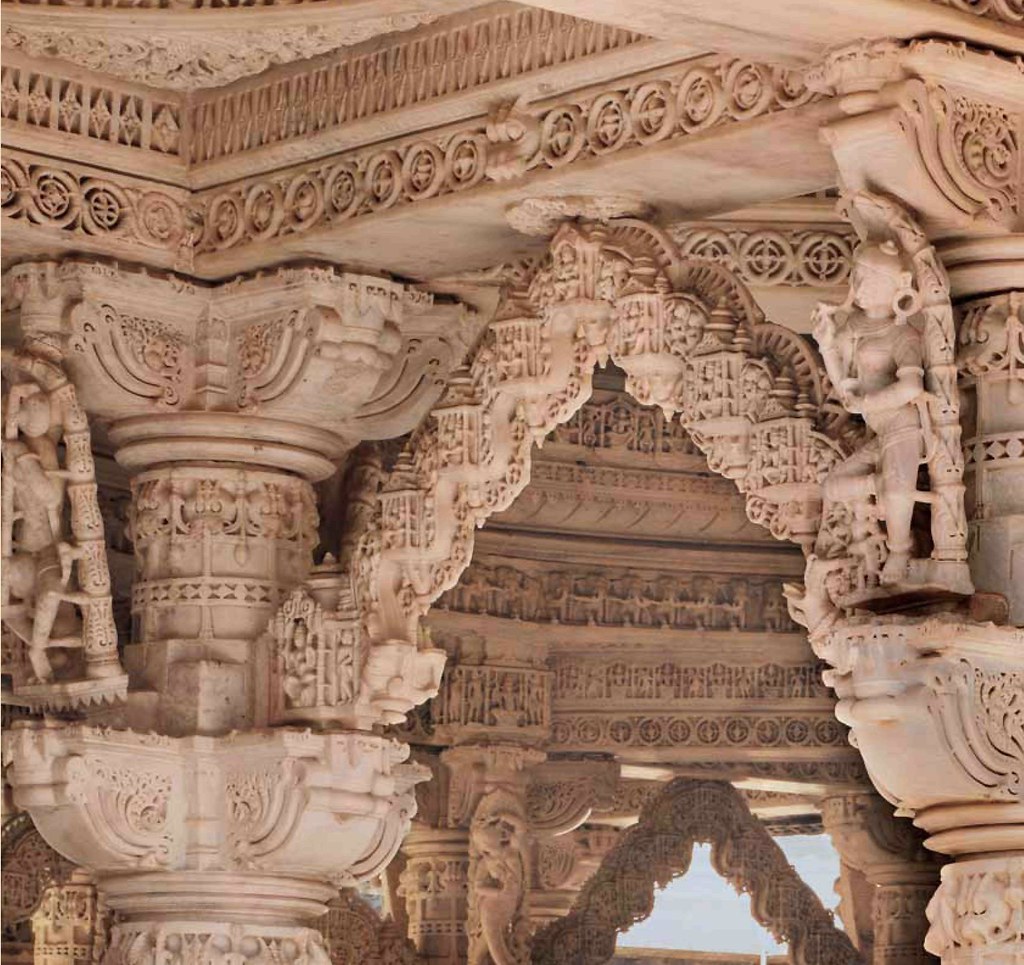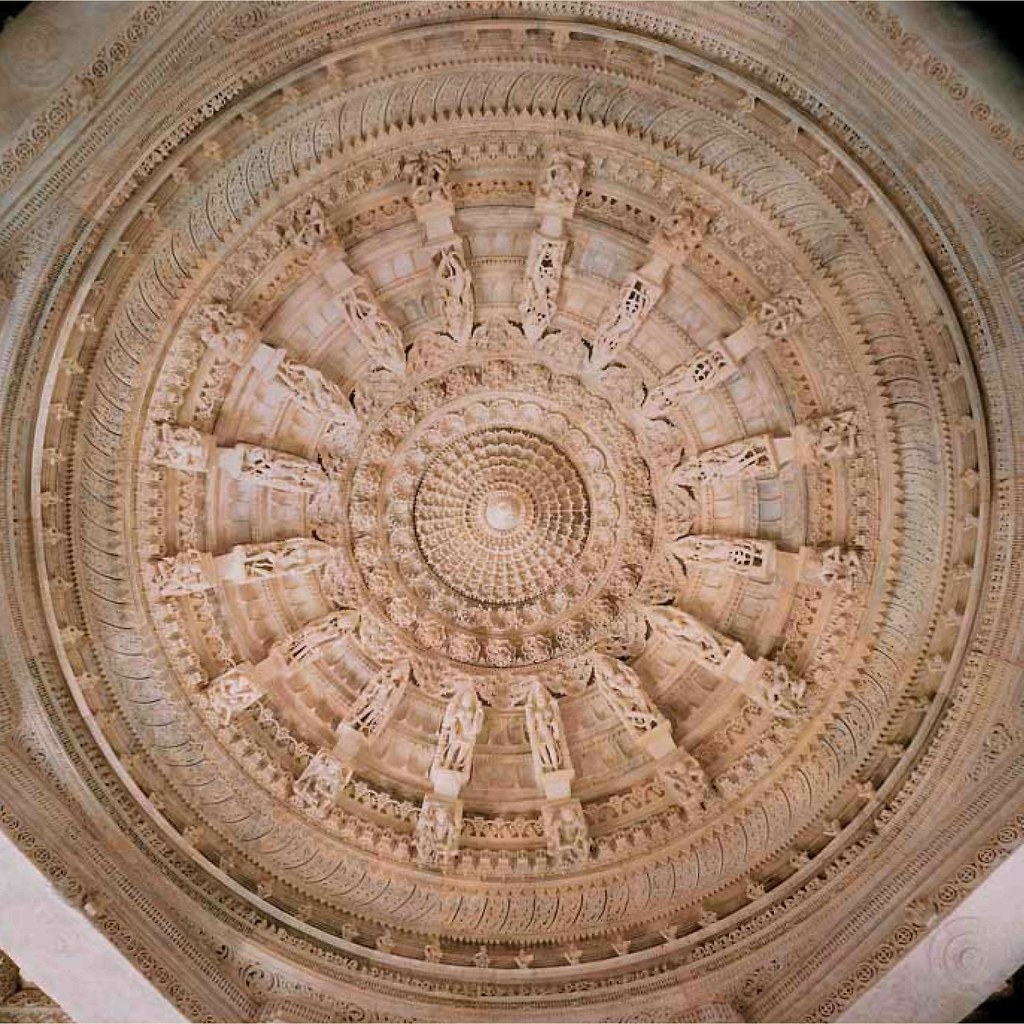 Capitals and toranas in Luna Vasahi/Tejapala Temple (left)
Capitals and toranas in Luna Vasahi/Tejapala Temple (left) Capitals and toranas in Luna Vasahi/Tejapala Temple (right)
Capitals and toranas in Luna Vasahi/Tejapala Temple (right)The Ranga Mandapa
The dance pavilion construction in 1147-1149 and is the most exquisite structure in the temple complex. As the interior had to be free of supporting pillars, a shikhara tower was not possible due to its heavy weight. Instead, a wide vaulted dome with a diameter of 6.6 m is covering the hall. This is the largest existing example of such a construction during the Solanki period. However, it still remains unknown how the static engineering of the temple is working since no tests have been made so far. Probably a ring beam runs through each of the eleven concentric stone rings of the dome and this absorbs the horizontal thrust.
The ranga mandapa is open from three sides. Consequently, it is brightly sunlit. Its eight pillars, forming an octagon, are lavishly embellished with floral, geometrical and figural motifs and they are linked to one another with elaborately scalloped and intricately carved arches, so-called toranas.
The architecture overall gives the impression of a precious ivory carving with intricate relief-work in which solid wall structures seem to melt away in favour of the play of light and shade. The scraping technique at least partly applied for the carving and construction (the masons had been paid based on the accumulated marble dust). Interestingly, architraves run through the surrounding halls, perhaps in the belief of thereby deflecting a part of the thrust.
From the interior, the dome appears suspended weightlessly over the visitor. Hanging down from the centre is a pendant in the form of a lotus blossom (padamashila); this has not yet acquired the overhanging form of the later periods and in comparison to the dome appears to be disproportionately small. To offset the smallness, a garland of low hanging, conical ornaments surround it. The lotus, which is repeated ceaselessly in the ceilings of ML Abu and Ranakpur represents, at the microcosmic level, the enlightenment of the individual and, at the macrocosmic one the entire cosmos or universe. The lower concentric rings embellished with endless rows of ornaments alternating with carvings of animals and human figures: they include the depiction of events from Jain mythology, the inevitable danseuses and elephant processions. The central motif is surrounded like a wreath of radiance by a series of sixteen brackets showing the so-called goddesses of knowledge (vidya devis). They symbolise that moksha can be achieved only through the concretely achieved knowledge of the individual. The figures are deeply under carved and, therefore, contact plastically against the background. Due to the delicate and slim proportions, the figures appear fragile.
 Dome of the ranga-mandapa in Luna Vasahi Temple
Dome of the ranga-mandapa in Luna Vasahi Temple
Dome of the ranga-mandapa in Luna Vasahi Temple
